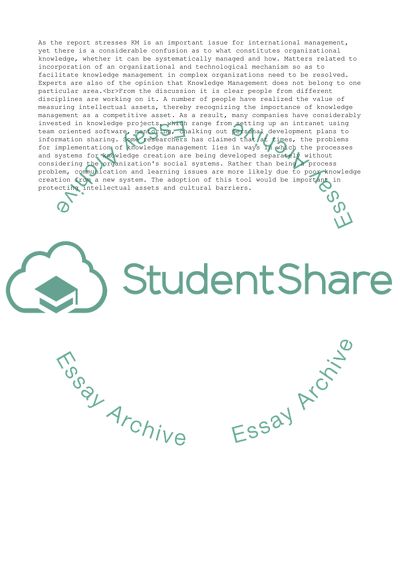Cite this document
(“Knowledge Management is not Achievable in Large Complex Organizations Essay”, n.d.)
Knowledge Management is not Achievable in Large Complex Organizations Essay. Retrieved from https://studentshare.org/business/1650201-knowledge-management-is-not-achievable-in-large-complex-organizations-discuss
Knowledge Management is not Achievable in Large Complex Organizations Essay. Retrieved from https://studentshare.org/business/1650201-knowledge-management-is-not-achievable-in-large-complex-organizations-discuss
(Knowledge Management Is Not Achievable in Large Complex Organizations Essay)
Knowledge Management Is Not Achievable in Large Complex Organizations Essay. https://studentshare.org/business/1650201-knowledge-management-is-not-achievable-in-large-complex-organizations-discuss.
Knowledge Management Is Not Achievable in Large Complex Organizations Essay. https://studentshare.org/business/1650201-knowledge-management-is-not-achievable-in-large-complex-organizations-discuss.
“Knowledge Management Is Not Achievable in Large Complex Organizations Essay”, n.d. https://studentshare.org/business/1650201-knowledge-management-is-not-achievable-in-large-complex-organizations-discuss.


